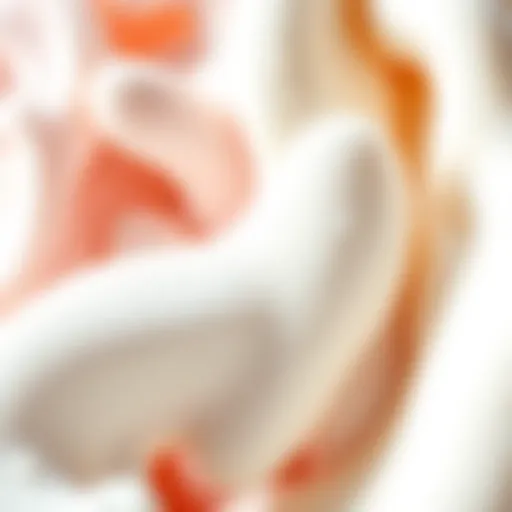Exploring Temporary Brown Hair Dye: Techniques and Care
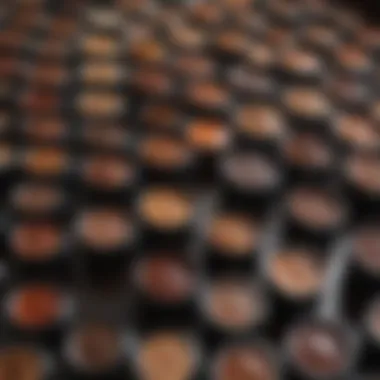

Intro
Temporary brown hair dye offers a creative way for individuals to alter their looks without a long-term commitment. While many people may shy away from permanent color changes due to worries about damage or maintenance, temporary dyes provide an ideal option for experimentation. These products can be perfect for special occasions or simply to refresh one’s style.
Why Choose Temporary Brown Hair Dye?
There’s an array of reasons why someone might opt for temporary brown hair dye. Some seek to express themselves differently, while others may want to test a shade before making a more significant commitment. The beauty of temporary dyes is that they typically wash out within a few shampoos, allowing flexibility for those who enjoy change or who have a specific event in mind.
"Temporary hair dyes can be a gateway to embracing your creativity without the long-term consequences."
Understanding Formulations
When considering temporary hair dyes, it’s important to test various formulations. Unlike their permanent counterparts, temporary dyes can be found in many forms, including sprays, gels, and foams. Each application method offers distinct benefits. For instance, foam dyes provide an easy, mess-free application, while spray versions allow for quick touch-ups on the go.
One must also consider the ingredients used in these dyes. Many brands nowadays steer clear of harsh chemicals, opting instead for plant-based or gentler components. It’s worth reading labels thoroughly to find products that align with your hair health priorities.
Application Techniques
Getting the application just right can be the difference between a hit or miss. Here are some practical tips for applying temporary brown hair dye effectively:
- Prep Your Hair: Ensure your hair is clean and dry before application. Wash it with a gentle shampoo to remove any product buildup that might interfere with the dye.
- Striking the Right Balance: Use a small amount of dye at first. You can always build up the color but washing it out is trickier.
- Consider Your Environment: Be sure to apply the dye in a space that is easy to clean or cover with old towels, as spills can occur.
Pay attention to each section of your hair to obtain an even coat, and once you are satisfied with the application, allow the dye to sit per package instructions before rinsing.
Post-Application Care
Once the temporary dye has done its job, post-application care cannot be overlooked. Gentle shampoos can help maintain hair health while ensuring color lasts as long as possible. In addition, regular conditioning treatments can help combat any dryness brought on by the coloring process.
Understanding the intricacies of temporary brown hair dye is essential for beauty enthusiasts who wish to dabble in hair color. From preparation to application and aftercare, each step plays a critical role in achieving the desired results.
Understanding Temporary Brown Hair Dye
In the realm of hair fashion, temporary brown hair dye has carved its niche as a favorite among adventurers of style. This section invites readers to dig deeper into the essence of temporary hair dye, unraveling its significance in today’s beauty landscape. The beauty of temporary dye lies in its ability to provide a quick, non-permanent transformation that satisfies a wide array of personal styles without the long-term commitment that often accompanies more permanent coloring options.
Definition and Characteristics
Temporary brown hair dye serves as a swift solution for individuals wishing to express themselves through hair color. It’s designed to coat the hair with color, staying vibrant and noticeable for a limited duration, often until the next wash. Most temporary formulations are free of harsh chemicals, making them a non-invasive choice for anyone dabbling in hair color for the first time.
The characteristics of temporary hair dye are straightforward. They generally come in various forms, like gels, sprays, or conditioners, each offering a unique application experience. Unlike their semi-permanent or permanent counterparts, temporary dyes don't penetrate the hair shaft; Instead, they simply lay on the surface. This characteristic is what enables their easy wash-out quality, which could occur after just one shampoo.
Comparative Overview
Temporary vs Permanent Hair Dye
When weighing temporary versus permanent hair dye, it's crucial to consider the commitment level involved. Permanent hair dye is, as the name implies, a solution crafted for longevity; it penetrates the hair’s cortex and can last for months on end. This could be a boon for those fully certain about their color choice. On the flip side, temporary dye stands as a beacon of flexibility. For those who want to switch it up—a rich mahogany today and a soft chestnut tomorrow—temporary options offer a carefree way to explore color fragility.
Another essential factor to consider is damage. Permanent dyes often involve developers and strong chemicals, risking the integrity of hair with prolonged use. On the contrary, temporary dyes typically boast simpler formulations, emphasizing ease of use with reduced chances of damage. Thus, the former appeals to those seeking to make a lasting impression while the latter aligns with individuals experimenting with ephemeral nature of color.
"Temporary hair dye is not merely an avenue for color, but a pathway that allows for daily transformations and self-expression."
Temporary vs Semi-Permanent Hair Dye
Semi-permanent hair dye occupies a middle ground between the two extremes, offering longer-lasting results than temporary options but still allowing some room for experimentation. This characteristic enhances its appeal for those in transition—perhaps moving from one color to another but not quite ready for full commitment. While semi-permanent options can last longer, often between four to twelve washes, they still fade considerably more gradually than permanent dyes.
The semi-permanent approach can feel almost like a soft whisper of color rather than a full-bodied statement, allowing room for subtler transitions and testing shades. However, if the intent is to simply dip into the world of color for a short span, there’s no denying the straightforward ease of temporary dyes. Individuals aiming for a quick switch, perfect for a one-off event like a birthday bash or a festival, would find a comforting ally in temporary formulas.
Ultimately, comprehending the differences between these hair color options helps potential users make informed decisions aligning with their beauty aspirations.
Why Choose Temporary Brown Hair Dye?
When considering changes to one’s hair color, temporary brown hair dye emerges as an appealing option for various reasons. This section sheds light on why individuals might opt for this particular type of hair color, highlighting its versatility, low commitment, and health considerations.
Flexibility and Variety
One of the most compelling reasons to choose temporary brown hair dye is its inherent flexibility. With a plethora of shades—from deep chestnut to soft caramel—available, users can easily find a hue that suits their mood or occasion. People wanting to experiment no longer limit themselves to one look; they can switch it up like flipping a switch.
Temporary hair dyes also allow individuals to play around with more than just basic browns. Think of an ash-brown for that bohemian vibe or chocolate brown for a polished look. Each shade brings a different personality to one’s style. This variety lets individuals adapt to their mood, seasonal changes, or special occasions.
Low Commitment
Change can be invigorating, but commitment, particularly in the realm of hair color, can often be intimidating.
Short-Term Experimentation
Short-term experimentation is a significant aspect of why temporary brown hair dye is so appealing. The beauty of temporary options is that they wash out within a few shampoos. This aspect is particularly beneficial for those hesitant about more permanent changes. Everyone has had days when they want to ride the wave of spontaneity without being anchored down by commitments. Being able to try a new look without the fear of long-lasting consequences makes temporary dyes popular.
Many enthusiasts can enjoy whimsical colors for weekends or special events, showcasing their creativity without permanent repercussions. This transient nature makes it easy to keep hair styling fresh and exciting.
Seasonal Trends
As seasons change, so do trends in fashion and beauty. Using temporary brown hair dye allows individuals to align their hair color with these seasonal shifts.
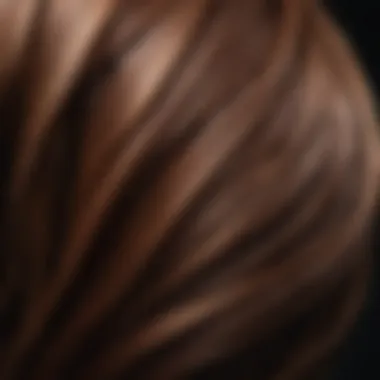

For example, during the fall, people often gravitate towards warmer, richer shades that evoke the changing leaves. A beautiful auburn or a warm chestnut could be the talk of the town at autumn festivals. Conversely, as summer rolls in, lighter hues can bring a sense of lightness and fun.
This adaptability becomes a key characteristic. You can comfortably swap colors with the seasons without the long-term commitment of a permanent dye. It’s a practical choice for those inspired by nature’s palette.
Health Considerations
Health is an important factor in choosing any cosmetic product. Temporary brown hair dye is frequently formulated with fewer harsh chemicals, making it a more gentle choice for the hair.
Fewer Chemicals
In recent years, there has been an increasing awareness regarding the chemical makeup of beauty products. Many individuals are now cautious about what they apply to their hair. Fewer chemicals in temporary dyes pose less risk concerning harmful effects on the scalp and hair. This aspect is a major draw, especially for those with sensitive skin.
While permanent hair dyes often contain strong chemicals like ammonia or peroxide, many temporary options forgo these ingredients, opting instead for more natural alternatives. This transition to more skin-friendly products means users can express themselves without sacrificing hair health, which fortifies the appeal of temporary dyes.
Reduced Damage
In addition to having fewer chemicals, temporary dyes tend to be less damaging to the hair than their permanent counterparts. The reduced risk of damage is a vital characteristic for individuals who frequently change their hair color.
Because temporary options don't penetrate the hair's shaft as deeply as permanent dyes, they often do not lead to the same degree of dryness or brittleness. This results in healthier, shinier hair after coloring. Moreover, users can enjoy their new look with peace of mind, knowing that they’re minimizing potential harm to their locks.
In summary, choosing temporary brown hair dye offers a delightful mix of flexibility, low commitment, and health consciousness, laying a solid foundation for a diverse range of users looking to explore their hairstyling options.
Formulations of Temporary Brown Hair Dye
Temporary brown hair dye comes in a variety of formulations, each bringing its own set of benefits and considerations. Understanding these formulations is crucial for anyone looking to change their hair color for short periods without the long-term commitment associated with permanent dyes. The choice of formulation can affect application ease, color intensity, and overall results.
Types of Formulations
Sprays
Hair dye sprays are a favorite for those who want a quick fix. They provide an instant color boost, often requiring just a few simple spritzes. The key characteristic of sprays is their convenience, which makes them a popular choice for on-the-go color changes. The unique feature of hair dye sprays is how easily they apply without the mess usually associated with traditional dyes. However, users should note that the color may not last long and often fades more quickly than other types. Another point to consider is that the application can be uneven if not done carefully, leaving some areas darker than others.
Gels
Hair gels offer a different approach to temporary color. They're often thicker than sprays and can provide a more controlled application. The key characteristic of gels lies in their ability to provide good coverage with a smooth finish, making them a beneficial option for those aiming for a more polished look. A unique aspect of gels is their versatility; they can be used for specific styling needs while also dyeing the hair. However, the downside is that they can be a bit tougher to rinse out, sometimes requiring multiple washes, which might not be ideal for those wanting a quick change.
Conditioners
Temporary hair dye conditioners not only add color but also nourish the hair, making them a two-in-one product. The key characteristic of these formulations is how they condition the hair while depositing color, making them beneficial for maintaining hair health. A unique feature is their ease of use; they can be applied just like a standard conditioner, leaving much less room for user error. However, some users might find that the color payoff is not as intense as with gels or sprays, which can be a drawback for those seeking a bolder look.
Active Ingredients
Understanding the active ingredients in temporary brown hair dye is essential, as they play a significant role in how the product works and how it interacts with hair.
Dyes vs Pigments
When it comes to hair coloring, one must understand the distinction between dyes and pigments. Dyes are often water-soluble and penetrate the hair shaft, while pigments are larger, non-soluble particles that coat the strands. The key characteristic of this distinction is that dyes may offer a more vivid color, whereas pigments tend to create a more nuanced, softer look. While dyes can last longer because they penetrate the hair, they may also cause more damage due to their chemical makeup. On the other hand, pigments can be easier on the hair but might not provide the longevity some users desire.
Vegan and Cruelty-Free Options
With growing awareness around animal rights and ethical considerations, many users now seek vegan and cruelty-free hair dye options. Such products typically do not include any animal-derived ingredients and reflect a commitment to ethical beauty choices. The key characteristic of vegan and cruelty-free options is their focus on sustainability and animal rights, making them a beneficial choice for conscious consumers. They can also be as effective as their traditional counterparts; however, some users may need to research specific brands to ensure quality and performance.
Application Techniques
When it comes to applying temporary brown hair dye, mastering the application techniques can make all the difference in the final result. Effective application is key to achieving a vibrant and consistent color that not only looks great but also holds well during the period it's meant to last. Proper techniques avoid streaks, patches, and other common mishaps, ensuring that the dye behaves as intended. For beauty enthusiasts, getting the hang of these methods offers a more rewarding and satisfying experience, enhancing their self-expression through hair.
Preparation Steps
Before diving into applying hair dye, it’s essential to prepare both your hair and your workspace. This step involves several important tasks:
- Gather Supplies: Make sure to have all tools at hand - dye, gloves, sectioning clips, a dye brush, and a cape.
- Clean Your Hair: Wash your hair to remove product buildup but avoid conditioner, as it can make the hair slippery.
- Protect Your Skin and Clothes: Drape an old towel or a garment you don’t mind staining. Gloves are a must to prevent hand staining.
Taking these preparatory steps can significantly impact the ease of application and the overall result.
Application Process
The application process itself showcases several nuanced steps that enhance the end result. Attention to detail at this stage can lead to a more polished appearance.
Sectioning the Hair
Sectioning the hair divides it into manageable parts, allowing for thorough application. By clipping away sections, you can ensure that every strand receives color, which is essential for a uniform finish.
The key characteristic of sectioning is its systematic approach—it breaks the task down into smaller, more achievable parts. This is a beneficial choice as it minimizes the chance of missing spots, especially for those with thicker hair.
One unique feature of this technique is that it allows for easier troubleshooting. If you notice uneven coloring, it’s simpler to identify which section needs a touch-up. However, some might find this method time-consuming, especially if they’re in a rush.
Even Distribution
Achieving even distribution of dye is critical for a successful application. This aspect ensures that the dye penetrates appropriately and without patches.
The key characteristic here is its role in achieving a natural look. Carefully applying the dye, strand by strand, allows it to absorb better, which gives a professional finish. This method is favored because it guarantees that all hair strands have equal exposure to the dye.
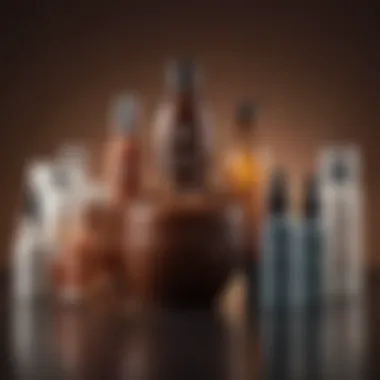

While this technique is effective, the unique feature lies in its need for some patience and practice. Some can find it quite tedious, yet it's a necessary step for those looking for high-quality results.
Duration Recommendations
Duration recommendations inform how long to leave the dye in for optimal results. Timing is particularly crucial since leaving it on too short may result in faded color, while too long could lead to unwanted shades or damage.
The key characteristic of this guideline is its ability to shape the overall outcome of the application. Following recommended time ensures that scientists behind the formulations achieved the balance of color intensity and hair health.
A common unique feature of temporary colors is their flexibility in duration; the aim is often to find the sweet spot that works for you. Weighing the benefits includes not just improved color but also peace of mind that the hair remains healthy.
Post-Application Care
After you've achieved the desired color through careful application, proper post-care plays a vital role in extending the vibrancy of the temporary dye. It's beneficial to adopt a routine that nurtures the hair while keeping the color intact.
Rinsing Techniques
The way you rinse out your temporary hair dye is crucial for maintaining color vibrancy. A thorough rinse allows the excess dye to be washed away while safeguarding the hair's cuticle.
A primary key characteristic of effective rinsing techniques is the water temperature. Using lukewarm water helps seal in the color while avoiding heat-related damage. This makes it a popular choice among those who want to ensure their hair remains healthy post-dye.
The unique feature of rinsing is the potential for color leakage; gentle rinsing can minimize this issue. Avoiding hot water is essential since it can wash out the color more quickly.
Recommended Products
Using the right products post-application can nurture your freshly dyed hair and prolong color retention. Shampoos that are sulfate-free are preferable as they cleanse without stripping essential oils.
Key characteristics of recommended products center around their formulation. Products designed for color-treated hair help maintain vibrancy while keeping hair moisturized.
Unique features of these products can vary; some specialize in deep conditioning, while others focus on color protection. While more expensive options may provide superior results, budget-friendly ones can still be effective if chosen wisely.
Potential Risks and Considerations
When considering the use of temporary brown hair dye, it’s crucial to understand the potential risks and considerations involved. Many people are keen to explore new looks, yet they often overlook the implications this choice might have on both health and the environment. Considering these factors can help individuals make informed decisions that align with their beauty goals while minimizing potential negatives.
Allergic Reactions
Allergic reactions to hair dye, though not exceedingly common, can pose significant concerns for users. It's vital to remember that ingredients in temporary dyes can trigger reactions in sensitive individuals. Symptoms may vary, including redness, itching, or severe irritation. If someone has previously experienced reactions to hair color or any cosmetic product, performing a patch test a day before applying the dye can be a simple yet effective precaution. This involves applying a small amount of product to a discreet area, like behind the ear, and observing it for a day. Such proactive measures can make a world of difference and ensure peace of mind during the dyeing process.
Staining Issues
Staining is another unfortunate aspect worth discussing when it comes to temporary hair dye. People often focus on the vibrancy of the color but tend to ignore the potential for unsightly stains on skin and fabric.
Skin Staining
Skin staining occurs when the dye accidentally touches areas other than the hair, such as the forehead, neck, or even ears. While temporary dyes are formulated to wash out easily, immediate action can minimize these mishaps. Using a barrier like petroleum jelly along the hairline before application can help significantly. Skin staining doesn't just create a visual mess; it often leads to time-consuming cleanup rituals post-application. Despite these minor setbacks, temporary dyes remain popular because they offer versatility and vibrancy without the long-term commitment. Understanding these risks and planning accordingly can help enthusiasts enjoy their new looks without too much hassle.
Fabric Staining
Fabric staining can be a real downer, especially if dye splashes on treasured clothing or upholstery. Temporary dyes can sometimes leave stubborn marks on fabrics, which may require special treatment or dry cleaning. The key here is prevention; wearing old or dark clothes and using drop cloths during application can save a lot of trouble.
Moreover, fabric stains from temporary hair dye can often be treated effectively if attended to quickly with the right cleaning products. Some products, like stain removers or specialized fabric cleaners, can work wonders, but they may not always guarantee restoration of the original look. Therefore, being mindful about the environment where dyeing is taking place – and taking steps to protect fabric surfaces – can go a long way in mitigating the risk of staining.
"Taking proactive steps minimizes the risk of accidental staining and allergic reactions, allowing you to enjoy the fun of experimentation with minimal headaches."
By understanding these potential risks and considerations involved with temporary brown hair dye, individuals can navigate their dyeing journey with greater confidence and ease.
Maintaining Healthy Hair Post-Dyeing
Maintaining healthy hair after using temporary brown hair dye is essential for anyone looking to sport a new hue. Although temporary dyes typically contain fewer harsh chemicals compared to permanent ones, the hair still experiences a change, demanding attention and care. This part dives into the necessary hair care routines and the recommended products to support vibrant, healthy strands, and prevent damage post-dyeing.
Essential Hair care Routines
After applying any hair dye, nurturing the hair is crucial for maintaining its shine, softness, and overall health. Here are some foundational routines one should consider:
- Frequency of Washing: It’s wise to avoid washing your hair too frequently right after dyeing it. This helps to preserve the color and reduces the risk of stripping away natural oils. Stick to washing it every few days to keep the dye intact longer.
- Gentle Drying Techniques: Rubbing hair aggressively with a towel can cause damage. Instead, consider gently blotting it or using a microfiber towel, which is gentler on the strands.
- Heat Styling Restrictions: Post-dyeing, your hair might be more porous and fragile. Reducing heat styling as much as possible helps prevent further damage, ensuring you retain your new color.
- Deep Conditioning Treatments: Incorporating a deep conditioning treatment into your weekly routine can make a big difference. Look for those that contain nourishing oils and proteins to aid in repair and hydration.
Recommended Products
Nourishing Shampoos
When it comes to maintaining hair health post-dyeing, choosing the right shampoo is key. Nourishing shampoos are tailored to clean without stripping color. These products often prioritize ingredients like natural oils and proteins that feed the hair rather than deplete it.
- Key Characteristic: A significant aspect of nourishing shampoos is their sulfate-free formulation. Sulfates can lead to fading of color and dryness, making sulfate-free options the preferred choice for dyed hair.
- Why It’s Popular: Many beauty enthusiasts are leaning towards these shampoos, recognizing that their gentle cleansing properties help maintain vibrancy while keeping the hair soft and manageable.
- Unique Feature: Nourishing shampoos often feature a blend of botanical extracts, which can add shine and protect against environmental stressors.
- Advantages: Since most nourishing shampoos work well with semi-permanent dyes, they make a beneficial addition to your hair care routine while ensuring your hair feels revitalized.
Moisturizing Conditioners
Pairing your shampoo with a suitable moisturizing conditioner helps seal in hydration, fortifying the hair structure post-dyeing. These conditioners are designed to hydrate, detangle, and soften, which can greatly enhance the look and feel of dyed hair.
- Key Characteristic: A primary characteristic of these conditioners is their ability to provide intense moisture that penetrates the hair shaft, helping to repair damage from the dyeing process itself.
- Why It’s Popular: The popularity stems from the immediate results users see in terms of softness and manageability, which encourages consistent use among hair dye aficionados.
- Unique Feature: Many moisturizing conditioners also come fortified with vitamins and proteins that help build strength back into the hair, making them doubly beneficial.
- Advantages: Regular use of a high-quality moisturizing conditioner significantly contributes to maintaining the dye's luster and vibrancy while ensuring that the hair remains resilient and less prone to breakage.
"Caring for your hair post-dyeing isn't just about maintaining color; it's about nurturing the very strands that give you confidence and beauty."
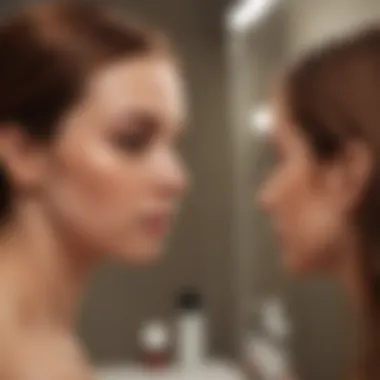

Keeping these practices in mind promotes a healthy routine post-dyeing, allowing for both color longevity and hair vitality.
Exploring Color Combinations
Delving into temporary brown hair dye opens the door to a world of possibilities. One compelling aspect is the ability to explore color combinations. This isn't just about a single shade; it’s about artistic self-expression and the versatility that comes along with it. By blending brown with other hues, individuals can achieve unique styles that reflect their personal aesthetic or even current trends.
Blending with Other Shades
Mixing brown with other colors can create captivating looks. For instance, brown mixed with blonde tones results in a sun-kissed appearance that brings warmth to the hair. Alternatively, pairing brown with deep reds can result in a rich mahogany effect. This type of combination not only enhances the overall look but also provides depth and dimension.
- Considerations When Blending:
- Skin Tone Match: Choosing shades that complement one’s skin tone is crucial. A warm brown blended with honey blonde may suit warmer complexions, while cooler browns might pair better with ash tones for others.
- Color Staining: Temporary dyes generally wash out, but certain combinations might lead to staining on light fabrics. It’s wise to take precautions while experimenting.
Fashionable Looks to Try
Exploring fashionable looks can elevate the temporary brown hair dye experience. Two popular styles to consider are highlights and ombre effects.
Highlights
Highlights can brighten hair while adding a touch of glamour. When incorporated into brown hair, highlights create a multidimensional effect that can be striking. This technique allows individuals to play with varying shades without committing to a full dye job.
- Key Characteristic: Highlights are generally applied to strands of hair, ensuring that darker roots contrast beautifully with lighter ends.
- Benefits: This approach is beneficial for those who want a fresh look while maintaining a natural feel. It adds brightness without overwhelming the base color, making it popular among beauty enthusiasts.
- Considerations: Though highlights appear effortless, achieving the right balance can require some skill during application to avoid streaky or overly bold appearances.
Ombre Effects
Ombre effects provide a stunning gradient from dark to light tones. It’s a seamless transition, usually starting with a rich brown at the roots and fading into a lighter shade such as caramel or honey towards the ends.
- Key Characteristic: The key here is the gradual change in color, which can give a vibrant yet sophisticated appearance.
- Popularity: Ombre styles have gained traction for their adaptability. It allows individuals to express creativity while being easily manageable compared to more traditional dyeing methods.
- Unique Feature: The gradual blend creates a softer contrast, which is advantageous for those experimenting with hair color for the first time, as it reduces the starkness of color changes and allows for easier maintenance.
"Exploring color combinations allows beauty enthusiasts to embrace their creativity while adapting their looks to suit their moods or occasions."
Cultural and Social Implications
The conversation around temporary brown hair dye is not just about the aesthetics and practicalities behind it. It’s thicker than that, intricately woven into the fabric of social norms and cultural narratives. Hair color has for centuries served as an emblematic display of identity, symbolic meaning, and even societal group belonging. Understanding the cultural significance of hair color can lead us into many layers of perception, emotion, and expression.
Cultural Significance of Hair Color
The hues we choose to drape ourselves in can tell stories about heritage, status, and even personal beliefs. Hair color has long served as a canvas for self-expression. For example, in many cultures, darker shades can signify robustness and bold character, while lighter hues often are associated with youthfulness or an air of whimsy. Brown, as a versatile and earthy color, can express reliability, warmth, and approachability all at once. It embodies a balance, often seen as more flattering in diverse skin tones.
Moreover, temporary brown hair dye becomes an essential tool for many who wish to tread the line between boldness and subtlety. When a person opts for this color, they often seek to blend tradition with modernity. It might be viewed as a nod to the natural world, presenting an image of groundedness amid a sea of vibrant alternatives immediately visible in the beauty industry. Thus, choosing brown can say a lot about a person’s values or current life stage.
"Hair not only shapes the persona but also influences how we are perceived by society."
This significance is amplified during pivotal life events. For instance, a woman choosing to dye her hair brown before starting a new job might view it as a way to project professionalism and enthusiasm for a new chapter in life. The choices in hair color often align with shifts in personal identity.
Changing Trends in Hair Dye Choices
Trends are as fluid as water, and the world of hair color is no exception. Over the years, the popularity of temporary brown hair dye has fluctuated in response to broader cultural changes and social movements. With the rise of social media platforms like Instagram and Pinterest, beauty trends can spread like wildfire, influencing vast numbers of individuals almost instantaneously.
Currently, there is a marked shift towards embracing diversity in beauty standards, which might explain the resurgence of natural tones, brown included. Many are moving away from the striking neon and fantasy shades to revisit or explore natural hair colors that symbolize authenticity.
In addition, the younger generations are welcoming the idea of non-permanence, enabling them to switch up their look without the weight of commitment that comes with permanent hair dye. This notion aligns directly with broader cultural movements, such as environmentalism, where individuals are turning to more sustainable beauty practices. The use of temporary dyes minimizes the long-term effects on texture and health, creating a compelling combination of appearance and well-being.
In summary, temporary brown hair dye isn't merely about color; it's steeped in social implications, emotional responses, and a relationship with society. Through understanding the cultural and social factors tied to hair color choices, one can gain insight not just into trends but into the very notion of self-expression and identity in our ever-evolving world.
Future of Temporary Hair Dye
The landscape of temporary hair dye is in a state of evolution, spurred on by consumer preferences and environmental consciousness. As people find ways to express themselves, the choices in hair dye are diversifying. The future of temporary brown hair dye isn’t simply about color but also how hair dye interacts with our lives and the world around us.
Innovations in Formulations
One of the key players in how temporary hair dye evolves is through innovation in formulations. New technologies and research are producing dyes that are less damaging to hair. Enhanced color delivery systems and unique binding agents are formulated to coat the hair shaft without stripping natural oils, ensuring a more nourishing experience. Some brands are embracing water-soluble pigments that allow for vibrant colors without the heavy chemical load that often comes with traditional dyes.
Moreover, brands are exploring eco-friendly ingredients, catering to consumers who prioritize both beauty and sustainability. These natural formulations, often derived from plant-based components, are not only better for the hair but also for the environment. The spotlight on vegan and cruelty-free options has led to a realignment in the industry, where ethical considerations are now just as pivotal as color vibrancy.
Benefits of These Innovations:
- Gentler on Hair: New formulations help prevent dryness and brittleness.
- Easier to Use: Some innovations, like foam or spray applicators, provide a stress-free application process.
- Better Color Retention: Advanced pigments ensure longer-lasting results, even temporary ones.
Innovations in formulations undoubtedly raise the stakes for how we view temporary hair color, making it a more viable option not just for a day but for casual wear without the commitment.
Sustainability Trends
As we look toward the future, sustainability becomes a centerpiece in conversations surrounding hair dye. More consumers are eager to understand how products impact our planet, and brands are responding pretty well by incorporating sustainable practices in their product lines.
In this transformation, manufacturers are beginning to prioritize environmentally friendly packaging and sourcing. This includes using biodegradable materials and minimizing plastics. Just as importantly, ingredients are being sourced responsibly with minimal impact on ecosystems.
"The beauty industry is gradually moving towards a model that respects both the consumer and the Earth, changing how products are designed and marketed."
Key Aspects of Sustainability in Hair Dye:
- Eco-friendly Ingredients: Natural and organic components reduce harm to the environment.
- Water Conscious Production: Techniques that require less water in dye production are gaining traction.
- Recyclable Packaging: Prominent shifts towards recyclable or refillable packaging reduce waste.
These sustainability trends indicate a promising trajectory where beauty and responsibility go hand-in-hand. As the market continues to embrace eco-conscious practices, beauty enthusiasts can indulge in temporary hair colors with a lighter footprint, contributing positively to the environment.
In sum, the future of temporary brown hair dye is exciting, weaving together innovation and sustainability that cater to changing consumer needs. As advancements are made, there lies an opportunity for beauty lovers to redefine their experience with hair color—offering room for creativity while also honoring their commitment to the planet.







